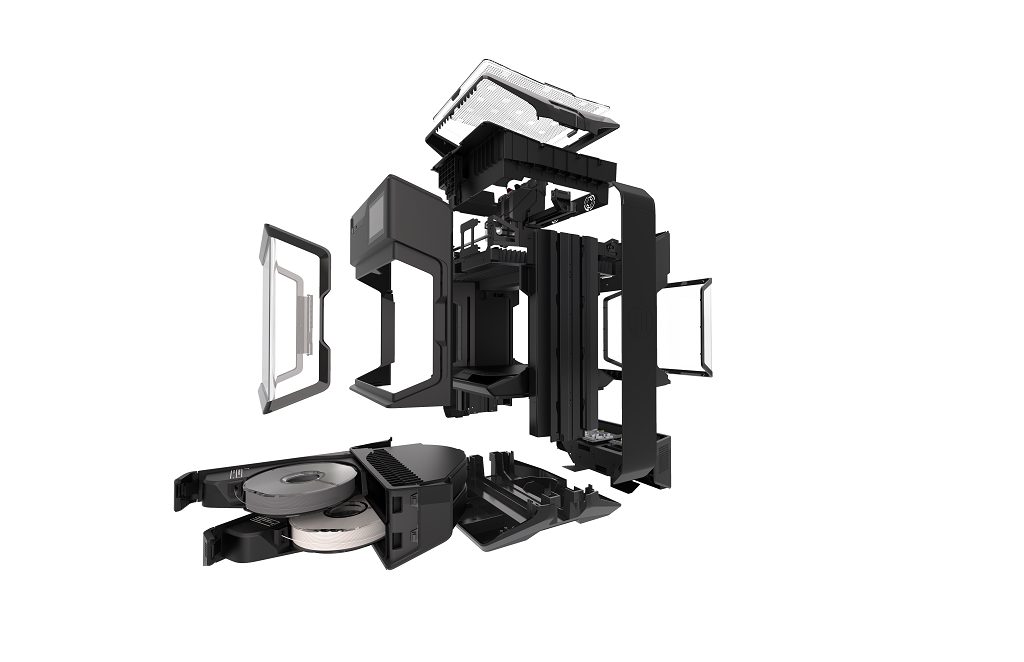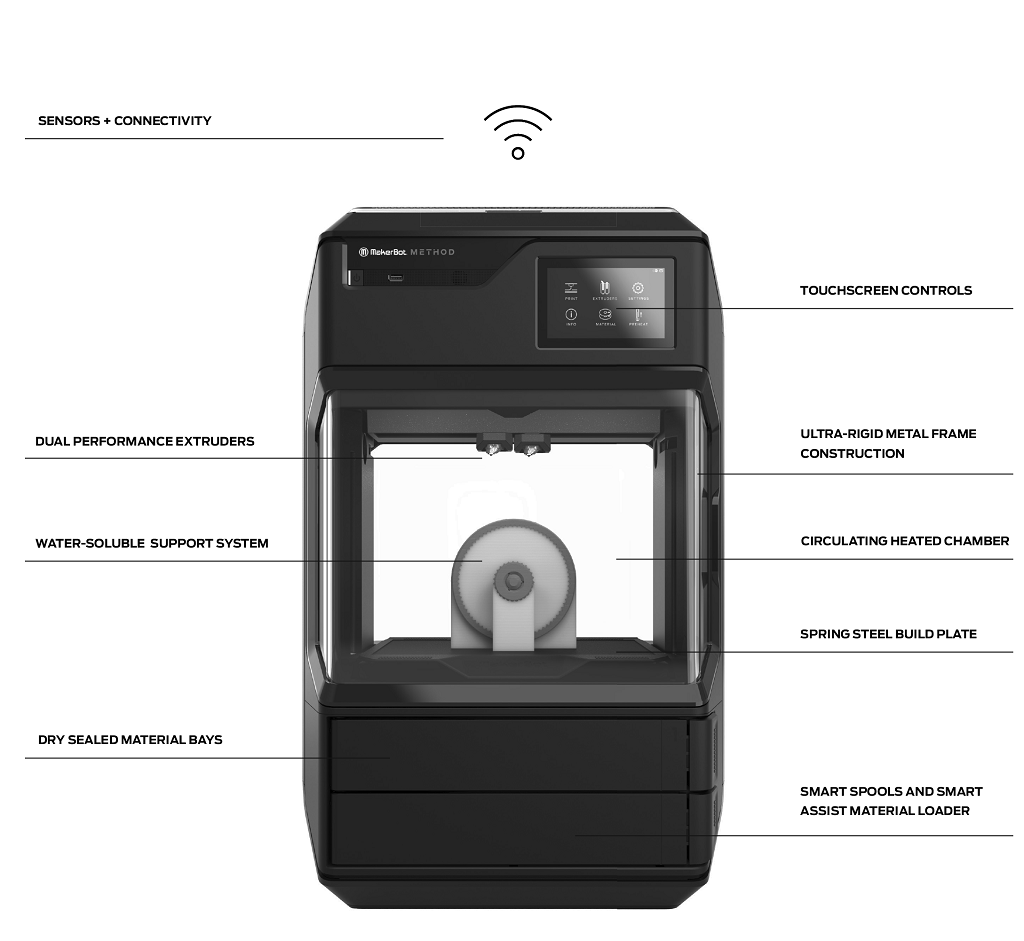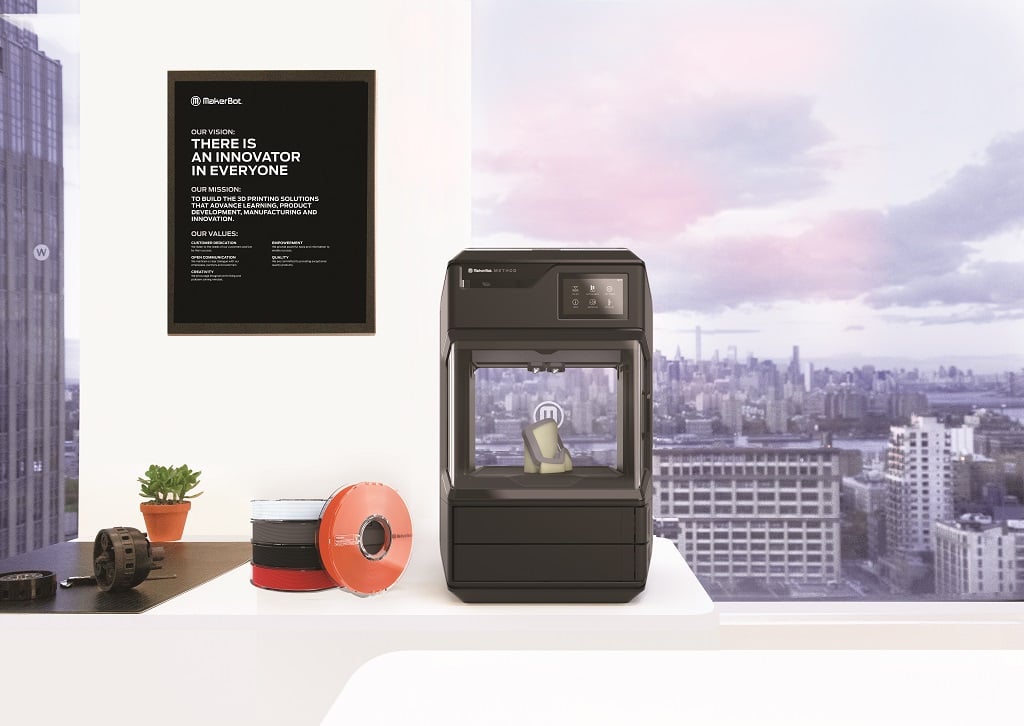![Meet the Method [Image: MakerBot]](https://fabbaloo.com/wp-content/uploads/2020/05/1MakerBotMethod_img_5eb0a0ec0865e.jpg)
MakerBot has just unveiled the Method, a ‘performance’ 3D printer set to bridge the gap between industrial and desktop 3D printing.
“Let me share with you what we’ve been working on the last few years,” MakerBot CEO Nadav Goshen said as we spoke last week. “Back in 2016 when I came on board, we changed the strategy of the company to shift away from the consumer market toward educational and professional users. Our focus has shifted to customer needs and how can we serve them better. We started with the education market, and discovered initially that we needed to provide a printer that can be a learning tool. This drove us to accelerate our services and ecosystem features that support a product. Among other things, we developed Thingiverse Education. We look at customer needs in a holistic way and develop appropriate tools.”
This shift in focus, following Goshen’s taking over as CEO at the beginning of 2017, has seen great progress in the educational market. And now it’s time for the second pillar of the strategy to take form, as today MakerBot ends the tease and introduces its new, professionally-geared 3D printer: meet the Method.
Built from the ground up with significant input from parent company Stratasys, MakerBot’s new Method was designed to meet professionals’ needs with the accessibility of a desktop unit. Available now for pre-order and with shipping targeted for Q1 2019, the Method carries a price tag of $6,499.
“Looking at the professional market, a lot is needed for engineers and designers when they adopt 3D printers, desktop especially. The RepRap movement got to a point where they are reaching the limit of what they can deliver in terms of dimensional accuracy, reliability, and ease of use. The systems are accessible — but they require a lot of tinkering. That drove us to the decision that if we really want to fulfill the needs of the professional, we need to develop a new platform,” Goshen explained.
“The Method is an industrial system in a nice and small form factor, presented in an accessible way and very affordable in price, without compromising on the spec and features industrial printers provide.”
Differentiating between ‘desktop’ and ‘industrial’ systems for Goshen and the MakerBot team comes down to the specifications and capabilities, as well as price point. The keys that Goshen drove home are in reliability and repeatability — messaging very consistent throughout the 3D printing industry today as more additive manufacturing technology turns to production use.
MakerBot VP of Engineering Dave Veisz noted that there remains a gap in the capabilities of desktop 3D printing for precise geometries.
“When you need to print something with detailed geometries, like snap-fit features, and you want to make decisions based on that, you need dimensional accuracy,” Veisz explained. “In the past, you may have sent that to service bureaus to be printed on high-end SLS or FDM printers, while you were just using desktop 3D printers for early-stage prototyping. We focused on this gap between desktop capability and essentially wanted to hit the requirements to bring industrial precision, accuracy, and reliability to have that merge with desktop accessibility and user experience. We realized through testing, through working with Stratasys, that we couldn’t do this on any of our existing platforms through incremental improvements: we needed to start with a new architecture.”
The engineering systems brought into play for the Method, he continued, previously have only been seen on industrial systems to produce accuracy, geometric freedom, and reliability in FDM 3D printing. A die cast CNC base with a one-piece gantry “makes for a really rigid frame,” Veisz continued, so there’s “no flexing that’s inherent to desktop systems, where vibrations translate into surface defects and part inaccuracies.”


A controlled environment, for both material and printing, further ensures a better 3D printing performance. While MakerBot has long been criticized for a lack of heated print bed, heat comes into play now — though still not on the print bed itself.
“The heated chamber is pretty special; it circulates air around the build plate, keeping it within a couple of degrees C. The target is configurable per material, and gives us a really consistent way to control warping and part distortion. The problem that everyone tries to combat with desktop machines is the heated build plate problem: when building an object up on a heated build plate, it keeps it flat, but then the environment is constantly changing when building further from the build plate in the Z direction. This affects the actual mechanical properties of the part, and takes away control for warpage because it’s subject to ambient conditions,” he explained.
![The circulating heated chamber was designed for precise temperature control [Image: MakerBot]](https://fabbaloo.com/wp-content/uploads/2020/05/5MakerBotMethodHeatedChamber_img_5eb0a0ed72e15.png)
Materials storage is also controlled, with desiccants in the spool base proving “very important for PVA support materials” used with this system. RFID-chipped spools with MakerBot materials provide further control and feedback, with the Method and MakerBot Print software automatically monitoring how much remains on the spool while also identifying material color and type.
Automation is crucial in the Method, which relies on “a lot of sensors and automation to automate manual processes that introduce errors into the 3D printing process.” These, Veisz continued, include a scripted calibration process.
“There are some key elements we’ve transported from the industrial world into this machine and, with the core capabilities of MakerBot, have put into a nice package. It’s accessible in terms of price, ease of use with a 5” touchscreen, automation in loading the material from the filament bay to the extruder where you don’t have to interact with the extruder, monitoring for out of filament,” Veisz said. “We’ve added sensors and automation to remove the pain points inherent in desktop 3D printers to make it accessible to users who don’t have this innate knowledge of the 3D printing process.”
We continued to discuss differentiators for the Method: check out part two for details on materials, integration of Stratasys technologies, target market, and initial users for the new Method.
Via MakerBot












1 comment
Comments are closed.